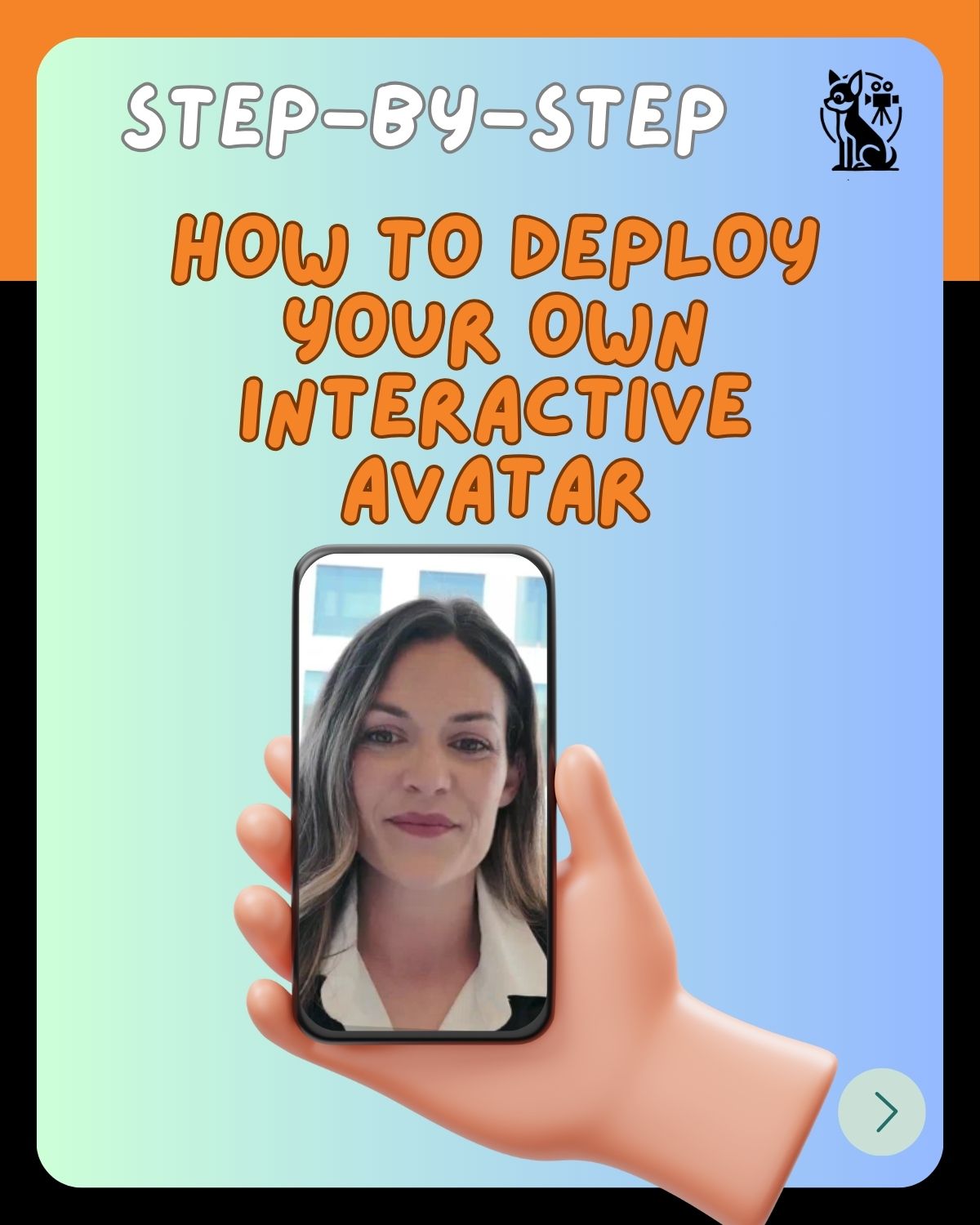1. What is an interactive avatar, and how does it work?
An interactive avatar is a digital representation of a human that can interact with users in real-time. These avatars are typically powered by preprogrammed information, enabling them to simulate conversations, answer questions, and provide feedback. They can engage users in video formats or in applications, responding to inputs like questions or scenarios. Depending on the programming, they can also adapt their responses based on the user’s interaction, making the experience feel dynamic and personalized.
2. How are interactive avatars used in business presentations or training?
Interactive avatars are ideal for creating dynamic business presentations and employee training programs. They can act as a virtual guide, explaining key concepts, demonstrating procedures, and even role-playing scenarios. For training, avatars can simulate various workplace situations like customer service interactions, allowing employees to practice and refine their skills in real-time. This reduces the need for live trainers while maintaining an engaging, interactive learning environment.
3. What are the benefits of using an interactive avatar over traditional video?
Traditional video content is static—once it's created, there's no room for user interaction. An interactive avatar, however, allows for real-time engagement. This means users can ask questions, receive tailored feedback, and explore different conversational paths. It enhances learning, improves customer engagement, and provides a more immersive experience than standard video content.
4. Can interactive avatars be customized to match our company’s branding?
Yes, avatars can be fully customized to align with your company’s branding. This includes designing their appearance, tone of voice, and personality. You can also preprogram their responses to ensure they reflect your company’s values and messaging, making them a seamless extension of your brand.
5. What’s the difference between an interactive avatar and a chatbot?
While both interactive avatars and chatbots are designed to engage users, avatars take the experience a step further by adding a visual, human-like presence. Chatbots generally rely on text-based communication, while interactive avatars deliver a face-to-face, video-based interaction. This makes avatars more engaging and suitable for scenarios where human connection is important, such as customer service or employee training.
6. How do interactive avatars enhance learning and development programs?
Interactive avatars are incredibly effective for training and development because they provide an immersive learning environment. Trainees can engage in simulated conversations, practice difficult scenarios, and receive instant feedback from the avatar. Additionally, they can explore alternative outcomes by asking follow-up questions or testing different strategies—something that's harder to replicate in traditional training.
7. Are interactive avatars useful for customer support?
Yes, interactive avatars can greatly enhance customer support by simulating real customer interactions. They can handle inquiries, provide information, and even troubleshoot common issues, reducing the workload for human support teams. Plus, since they’re available 24/7, they can assist customers outside of regular business hours.
8. What industries can benefit most from interactive avatar technology?
Industries like customer service, healthcare, education, training, and entertainment stand to benefit the most from interactive avatars. They can be used for customer interactions, employee training, patient support, or even as virtual teachers or guides in educational settings.
9. How do interactive avatars improve user engagement on apps and websites?
Interactive avatars can engage users more deeply by personalizing the interaction and creating a dialogue. Instead of just passively watching or reading, users can ask questions, explore different responses, and receive personalized feedback, which keeps them engaged for longer periods and makes the experience more memorable.
10. What are the limitations of current interactive avatar technology?
While interactive avatars can simulate conversations and handle complex queries, they are limited by the scope of their programming. They can’t think or act independently outside of their predefined responses, and more complex scenarios may require constant updates to their knowledge base. Additionally, while they can mimic human behavior, they may still lack the nuances of real human interaction.
11. How does pricing for interactive avatars compare to hiring a human spokesperson?
While initial development costs for interactive avatars can be higher than hiring a human spokesperson, they offer long-term cost savings. Once created, an avatar can deliver consistent, professional-quality presentations or training sessions without needing rest, payment, or breaks. This makes them more cost-effective in the long run, especially for businesses that need to scale their content delivery.
12. How secure is the data collected by interactive avatars during user interactions?
Security is a top priority when developing interactive avatars. Data collected during interactions is usually encrypted and stored securely, ensuring compliance with privacy laws such as GDPR. Companies deploying these avatars are advised to work with reputable providers to ensure that all security measures are in place.
13. Can interactive avatars simulate real-time conversations?
Yes, interactive avatars can simulate real-time conversations, responding instantly to user inputs and providing tailored feedback based on the situation. While they aren't capable of completely spontaneous thought, their preprogrammed responses can create the illusion of a fluid, natural conversation.
14. Do interactive avatars work well with other AI systems like chatbots or virtual assistants?
Yes, interactive avatars can be integrated with existing AI systems such as chatbots or virtual assistants, enhancing their functionality. For example, a chatbot can handle initial customer queries, while an avatar could take over for more in-depth interactions requiring a visual or conversational touch.
15. How are interactive avatars used in explainer videos or marketing campaigns?
Interactive avatars can serve as engaging spokespeople in explainer videos or marketing campaigns, guiding viewers through product features or service offerings. Their ability to interact with the viewer adds a dynamic element to the content, making the message more engaging and easier to absorb.
16. Are interactive avatars expensive to develop and implement?
Development costs for interactive avatars vary depending on the complexity of the project. Simple avatars with preprogrammed responses are more affordable, while highly customized avatars with detailed programming can be more costly. However, the scalability and 24/7 availability of avatars can make them a worthwhile investment for many businesses.
17. How realistic can interactive avatars look and behave?
Advances in animation technology mean that interactive avatars can look remarkably realistic, with lifelike facial expressions and body language. While they may not yet pass for a real person in all cases, they can still create a highly engaging and realistic interaction that’s more personal than text or voice-based AI.
18. Can interactive avatars be used for mental health support or therapy?
Interactive avatars are increasingly being used in the mental health field as virtual therapists or guides, offering resources and conversation simulations for managing mental health issues. However, it’s essential to note that these avatars cannot replace professional mental health care, though they can provide supplemental support or information.
19. What’s the difference between an interactive avatar and a regular digital assistant?
A regular digital assistant is usually voice-activated and text-based, while an interactive avatar combines these capabilities with a visual, human-like presence. Interactive avatars can engage users in face-to-face video interactions, making them ideal for more personal or high-stakes situations like interviews or sales training.
20. Do interactive avatars support multiple languages?
Yes, many interactive avatars are programmed to support multiple languages, making them suitable for global companies or diverse customer bases. This ensures that users can interact with the avatar in their preferred language, improving accessibility and engagement.
21. How do you measure the success of an interactive avatar in business applications?
Success is typically measured through engagement metrics like time spent interacting with the avatar, customer satisfaction scores, and overall business outcomes such as sales conversion rates or employee performance improvements.
22. Can interactive avatars replace human employees in customer service roles?
While interactive avatars can handle many customer service tasks, they aren’t a full replacement for human employees. They work best when used as a supplement, handling repetitive inquiries or providing initial support before escalating complex issues to human agents.
23. What platforms are best suited for interactive avatar deployment?
Interactive avatars can be deployed across various platforms, including websites, mobile apps, virtual reality environments, and even video conferencing tools. Their flexibility makes them suitable for a wide range of applications across industries.
24. How quickly can an interactive avatar be developed and integrated into my business?
Development timelines vary depending on the complexity of the avatar and the use case. Simple, prebuilt avatars can be deployed in a matter of weeks, while fully customized avatars with intricate programming may take several months to develop and integrate.
At AI Video Creative, we specialize in providing tailored interactive avatar solutions, whether you're looking for video spokesperson services, training bots, or customer service enhancements. Our services help you make the most of this cutting-edge technology, offering scalable, engaging, and cost-effective solutions for your business needs.
https://www.aivideocreative.com/
Other Blogs
Other Blogs
Check our other project Blogs with useful insight and information for your businesses



